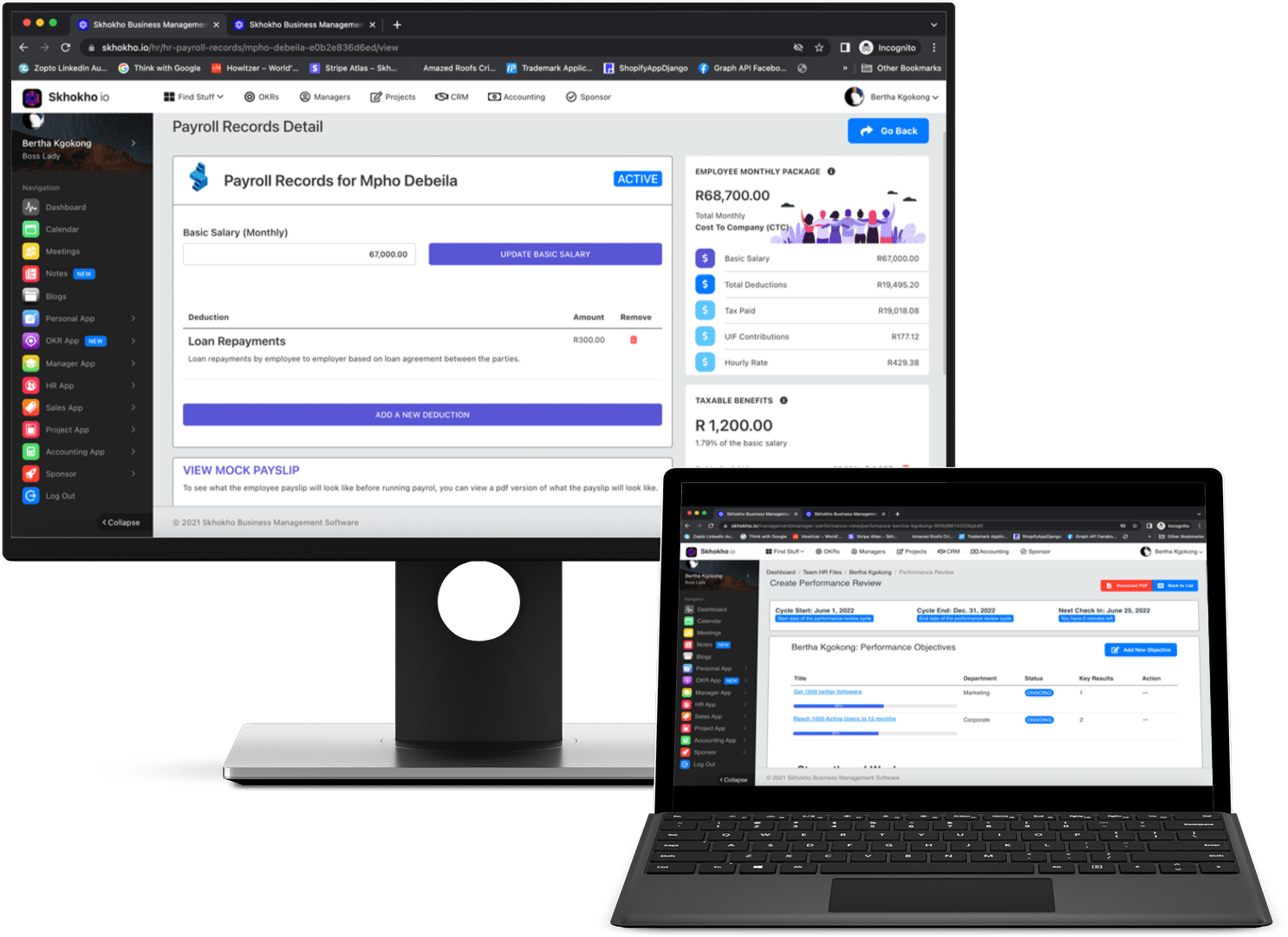The Role of HR in Building a Strong Company Culture
Company culture is the foundation of any successful business. It is the set of shared values, beliefs, behaviors, and attitudes that define the way people work together and interact with each other within an organization. A strong company culture can lead to higher employee engagement, it can cultivate exceptional performance, productivity, and retention, as well as better customer satisfaction and business performance. As such, it is essential for HR leaders to play a key role in building and nurturing a positive company culture.
In this blog, we will discuss the various ways in which Human Resources impacts company's culture. We will explore strategies for creating a positive workplace environment, developing a shared vision and values, encouraging employee engagement and recognition, embracing diversity and inclusion, supporting employee wellness, and nurturing a learning culture.

Ways in which HR can contribute to building a strong company culture
By developing and implementing effective HR policies and practices, HR can help create a positive corporate culture that promotes productivity, innovation, and employee satisfaction. In this section, we'll explore several key ways in which HR can contribute to building a strong organization's culture, including:
I. Creating a Positive Workplace Environment
A positive workplace culture is one where employees feel safe, comfortable, and supported in their work. HR's responsibility is to contribute to creating such an environment in several ways:
- Fostering positive communication among employees: HR can encourage open and honest communication among employees by creating forums for discussion, providing feedback mechanisms, and promoting transparency in decision-making. This can help to build trust and respect among colleagues, as well as improve collaboration and problem-solving.
- Providing opportunities for employee feedback and input: HR can gather feedback from employees on their experiences, challenges, and suggestions for improvement, and use this information to make changes and improvements to the work environment. This can help to increase employee engagement and satisfaction, as well as foster organizational culture of continuous improvement.
- Promoting work-life balance: HR can support employees' work-life balance by offering flexible work arrangements, time off, and other benefits that help employees to manage their personal and professional responsibilities. This can help to reduce stress, improve productivity, and increase employee loyalty and retention.

II. Developing a Shared Vision and Values
A shared vision and values can help to align employees around a common purpose and direction, and foster a sense of belonging and commitment to the organization. HR impacts company culture in developing and communicating a shared vision and values in several ways:
- Defining the organization's mission, vision, and values: HR can work with executive leaders and employees to define the company's purpose, direction, and values, and ensure that these are aligned with the organization's goals and objectives. This can help to create a sense of purpose and meaning among employees, as well as guide their decision-making and inspiring desired employee behaviors.
- Communicating the vision and values to employees: HR can communicate the company's mission, vision, and values to employees through various channels, such as internal communications, training, and performance reviews. This can help to reinforce the importance of these elements to the organization, as well as provide clarity and direction for employees.
- Incorporating the vision and values into daily work activities: HR can help to embed the company's vision and values into the daily work activities of employees by aligning performance goals, recognition and reward programs, and other HR practices with these elements. This can help to reinforce the importance of the vision and values to the organization, as well as increase employee motivation and engagement.

III. Encouraging Employee Engagement and Recognition
Employee engagement and recognition can help to build a sense of ownership and pride among employees, as well as increase their motivation and commitment to the organization. HR can contribute to encouraging employee engagement and recognition in several ways:
- Providing opportunities for employee development and growth
- Recognizing and rewarding employee achievements
- Promoting employee involvement in decision-making
IV. Embracing Diversity and Inclusion
Diversity and inclusion can help to create a culture of respect, tolerance, and innovation, as well as increase employee engagement and satisfaction. HR can contribute to embracing diversity and inclusion in several ways:
- Developing diversity and inclusion initiatives: HR can develop and implement diversity and inclusion initiatives that promote a diverse workforce, such as recruitment and retention programs that target underrepresented groups, or training programs that promote cultural awareness and sensitivity. This can help to create a more inclusive work environment, as well as attract and retain top talent.
- Creating a culture of respect and tolerance: HR can promote a culture of respect and tolerance by enforcing policies and practices that prohibit discrimination, harassment, or bias, as well as providing training and education on these topics. This can help to create a safe and welcoming work environment, as well as foster mutual understanding and respect among employees.
- Encouraging diverse perspectives and ideas: HR can encourage diverse perspectives and ideas by promoting collaboration and teamwork across different functions, departments, or locations. This can help to generate innovative solutions to business challenges, as well as increase employee engagement and satisfaction.

V. Supporting Employee Wellness
Employee wellness can help to promote physical, emotional, and mental health, as well as increase employee productivity, engagement, and retention. HR can contribute to supporting employee wellness in several ways:
- Providing wellness resources and benefits: HR can offer wellness resources and benefits, such as health insurance, gym memberships, or stress-management programs, that help employees to maintain their health and well-being. This can help to reduce absenteeism and presenteeism, as well as increase employee morale and satisfaction.
- Encouraging healthy behaviors and habits: HR can encourage healthy behaviors and habits among employees by providing education and training on topics such as nutrition, exercise, or mindfulness, as well as promoting wellness challenges or initiatives. This can help to create a culture of health and well-being, as well as improve employee performance and engagement.
- Promoting a positive work-life balance: HR can promote a positive work-life balance by offering flexible work arrangements, such as telecommuting or flexible schedules, as well as promoting a culture of respect for employees' personal time and responsibilities. This can help to reduce stress, improve employee morale and retention, as well as increase productivity and engagement.
VI. Nurturing a Learning Culture
A learning culture can help to promote continuous improvement, innovation, and adaptability, as well as increase employee engagement and retention. HR can contribute to nurturing a learning culture in several ways:
- Encouraging continuous learning and development: HR can encourage continuous learning and development among employees by providing training, mentoring, coaching, or job rotation programs that help them to develop their skills and knowledge. This can help to increase employee satisfaction, motivation, and retention, as well as improve organizational performance and competitiveness.
- Providing resources for employee education and training: HR can provide resources for employee education and training, such as access to online courses, conferences, or professional certifications, that help employees to stay current with industry trends and best practices. This can help to increase employee expertise and effectiveness, as well as improve organizational innovation and competitiveness.
VII. Fostering a Collaborative Environment
A collaborative environment can help to promote teamwork, communication, and innovation, as well as increase employee engagement and satisfaction. HR can contribute to fostering a collaborative environment in several ways:
- Creating opportunities for collaboration: HR can create opportunities for collaboration by promoting cross-functional projects, team-building activities, or social events that bring employees together. This can help to build relationships, trust, and respect among employees, as well as promote a sense of belonging and shared purpose.
- Providing tools and technologies for collaboration: HR can provide tools and technologies for collaboration, such as online platforms, messaging apps, or project management tools, that help employees to communicate and collaborate effectively. This can help to reduce communication barriers, improve productivity, and foster innovation.
- Recognizing and rewarding collaborative behaviors: HR can recognize and reward collaborative behaviors, such as sharing knowledge, offering help, or providing feedback, that contribute to the success of the team or the organization. This can help to reinforce the importance of collaboration, as well as increase employee motivation, engagement, and satisfaction.

How Can an HR Management Software Help
An HR management software can help to promote knowledge sharing and collaboration among employees by providing a centralized platform for communication, information sharing, and collaboration. Here are some ways that an HR management software can support knowledge sharing and collaboration:
- Communication: An HR management software can provide employees with a variety of communication channels, such as messaging, chat, email, and video conferencing. This can help to improve communication and collaboration among remote and distributed teams, as well as reduce communication barriers.
- Information sharing: An HR management software can provide employees with access to shared documents, company policies, knowledge bases, and other sources of information. This can help to improve knowledge sharing, reduce redundancy, and promote learning.
- Collaboration tools: An HR management software can provide employees with collaboration tools, such as project management, task assignment, and file sharing. This can help to facilitate collaboration among employees, as well as increase productivity and accountability.
- Analytics and reporting: An HR management software can provide managers and HR professionals with analytics and reporting capabilities, such as employee engagement, performance, and satisfaction. This can help to identify opportunities for improvement, as well as measure the impact of knowledge sharing and collaboration initiatives.
- Workflow automation: An HR management software can automate workflows related to knowledge sharing and collaboration, such as training, onboarding, and performance evaluation. This can help to streamline processes, reduce errors, and increase efficiency.
Overall, an HR management software can provide a range of features and capabilities that can support knowledge sharing and collaboration among employees. By leveraging these tools and strategies, organizations can improve their ability to learn, innovate, and compete in a rapidly changing business environment.
Preferred HR Management Software
Skhokho is a preferred HR software for small businesses for several reasons. Firstly, Skhokho is a cloud-based HR software, meaning that it can be accessed from anywhere, at any time. This is particularly important for small businesses, which may have employees working remotely or from different locations. The cloud-based nature of Skhokho makes it easy for businesses to manage their HR operations, even when their team is geographically dispersed.
Secondly, Skhokho is designed specifically for small businesses, which means that it is tailored to the unique needs and requirements of small business owners and HR department. This means that Skhokho is easy to use, intuitive, and customizable, allowing businesses to manage their HR operations in a way that suits their specific needs.
Thirdly, Skhokho offers a range of features and capabilities that can help small businesses to manage their HR operations more efficiently and effectively. This includes in-house payroll solutions, leave management, and the ability to manage employee files, payroll, leave records, and benefits in one place.
Main Features of Skhokho:
This software is created for business owners to help them manage:
- Objective Key Results
- HR and Payroll
- Employee timesheets and time tracking
- Customer information and profiles
- Project Milestones, Tasks and Billing
- Sales CRM
For more information on Skhokho HR App, click here. Skhokho offers a 14 day free trial, to register an account and utilise your free trial, click here, no credit card information required. For a documentation guide on how to find your way on Skhokho, click here.
Conclusion
In conclusion, HR plays a critical role in building a strong company culture that promotes employee engagement, satisfaction, and retention, as well as organizational performance and competitiveness. By shaping work culture through embracing the values of respect, diversity, wellness, learning, and collaboration, HR can create a work environment that attracts and retains top talent, as well as inspires employees to contribute their best efforts and ideas to the success of the organization. As such, investing in HR management is not only a wise business decision but also a moral imperative that reflects the commitment of the organization to its employees and its stakeholders.










